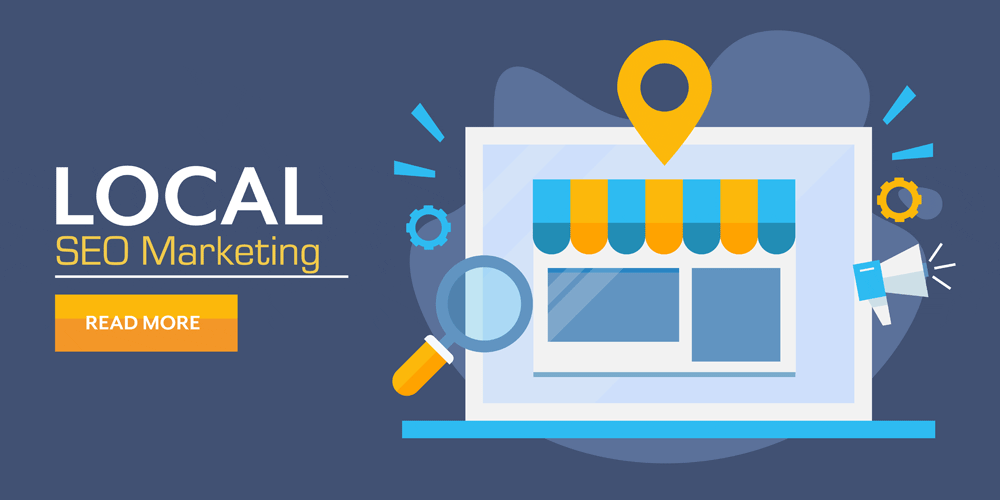Twitter Tests More Visible Alt Text

Twitter is testing two new features to improve image accessibility on mobile and desktop. A visible “ALT” badge, and exposed image descriptions, are among the features Twitter is testing to improve image accessibility on mobile and desktop. In an announcement, Twitter states it’s testing the features with 3% of users across iOS, Android, and web browsers. Twitter is aiming to launch these features globally in the beginning of April, following at least a month of testing. When a description, also referred to as alt text, is added to an image a rectangular “ALT” badge will be shown in the bottom corner. This signals to other users there’s descriptive text accompanying the image. To view an image description, users can click or tap on the ALT badge and the description will open, as shown in the example below: Twitter States: “Adding image descriptions allows people who are blind, have low vision, use assistive tech, live in low-bandwidth areas, or have a cognitive disability, to fully contribute on Twitter. We know these features have been a long time coming, and we’re grateful for your patience. We’re also working on the image description reminder. We’ll share more on that soon.“ How To Add An Image Description On Twitter To add an image description, follow these steps: >>> Upload an image >>> Select “Add description” under the image >>> Write a description >>> Select “Save” >>> Send tweet Your tweet will be sent with the “ALT” badge on the image. The description can be anywhere from one to one thousand characters in length. Plus, if you add multiple images to a tweet you can add unique descriptions to each of them. This feature is still in testing, so you may not have access to it right now. A full launch is expected this spring. Source: Twitter Feed
Optimising for “Near Me” Searches

Optimising for “Near Me” Searches Google, on average, gets over 100 billion searches a month, with the majority of these queries coming from mobile phones. However, arguably the best feature Google boasts isn’t its search capabilities, but rather its ability to identify nearby locals through its “near me” query (when it can locate your mobile device’s location). Whether you’re going to lunch in a specific locale or cruising an unknown interstate out of town, Google can use your location to identify nearby restaurants, grocery stores, salons and more. Optimise your Google My Business search To improve how well your business shows up on “near me” searches, one of the first things you should do is get on Google My Business. This is a free tool that Google offers. The primary benefit of it is that it allows businesses to improve their presence throughout all Google applications, including Google Maps. Once on the Google My Business page, you’ll need to submit a complete profile of your business. Be as thorough as possible when filling out your business’s information. You’ll be asked to provide your business name, location, contact information and hours of operation. However, go beyond that and include other helpful details as well, such as your website URL. Essentially, all the information you provide will display on searches when your business name pops up. The more details you offer, the easier it will be for clients to learn everything they want about you from one place. Make sure your information is listed consistently Google is particular when it comes to determining which businesses make the cut for near me results (just like with any other Google search results). Essentially, it favours consistency and location. If you want to increase your chances of showing up in results, make sure all information relating to your business is consistent across the web. For instance, if your business displays one address in one online directory, another on a different website and a third on Google My Business, Google picks up on these inconsistencies and pushes you further down in its rankings. The SEO world calls these listings “citations.” That’s why it’s important that all pertinent details of your business remain consistent everywhere. This can be accomplished by hiring a local SEO company, such as Direct Submit. Make Reviews and Customer Feedback count When you show up on “near me” results, one of the first things that will display directly beneath your business name is your overall customer rating. This will be based on a scale of one to five stars with five being the best. This not-so-little detail is considered a key factor that influences whether or not a customer chooses to do business with you over your competition. Make sure your site is mobile friendly As I mentioned, the majority of your customers will perform “near me” searches directly from their mobile devices. This means that if you’re listing your website on your Google My Business profile, which you should, then it makes sense for you to optimise your site specifically for mobile. “Near me” searches aside, people nowadays predominantly use their smartphones, not desktops, to access the web, so optimising for mobile is good business sense. When you’re checking how mobile friendly your site is, make sure all elements of it display correctly on mobile devices. For instance, make sure your site loads fully, nothing is cut off, buttons are functional and your site can be fully navigated. Local resources and directories Many industries have online associations or business directories that list businesses in that industry. Research to see if you find any for your industry. If so, reach out to them. Unless they’re charging a fee, getting your company on these listings is definitely worth it. If they require a payment, consider how strong the site is and its likelihood of referring your customer. If it’s not a well-known site, it’s probably better to skip out. There are always other, free ways to have your site backlinked. If you do find an appropriate directory or association to go with, verify that they’ll share your business’s geographic location in their posting. When Google sees several backlinks, it’ll weight your business more seriously in search engine results, including for “near me” searches. Google is a unique science in its own right, but one worth mastering because of its innumerable benefits to your business. Increased exposure, heightened foot traffic, and more web searches are just a few things to look forward to when you optimise your business for “near me” searches. As an added bonus, “near me” is a great (and free) way to market your business in a unique way. If your business relies on traffic from the search engines, and it would benefit from the increase in traffic better rankings could deliver, we can help. Direct Submit are a digital marketing agency that specialises in all thing’s SEO. Set up over 15-years ago, we have been continually adjusting and tweaking our proprietary SEO strategies, which has made us leaders in our industry. Call Direct Submit today on 0845 2722350 or visit our website for further information on how we can help your business do more with local SEO.
Key Steps of an SEO Implementation Process

Key Steps of an SEO Implementation Process. Almost every business wants its business to be found on the first page of the major search engines. Your business has to earn that right to get these results using an effective SEO process. The Search Engines, most notably Google, are continuously changing and updating how they rank for search results. To ensure your website remains successful within the search engines, you need time, expertise and energy to focus on recognising these changes. Here are a number of recognised steps for any successful SEO campaign: 1. Website Audit If you have a website for your business, the first step is to run an SEO audit on it. The audit will check your website for keyword ranking, content, current SEO level, inbound/outbound links, social media presence and how you rank against your competition. 2. Keyword Analysis Performing keyword research is not always a straightforward process. Some keywords, obviously relevant to your business and product, can be highly competitive, making it futile to use them for ranking. There are tools that you can use to analyse and research what keywords and phrases might work best, but sometimes it takes plain old logic to determine the best ones. For example, what will my target audience use in their search queries to find my product? And if they find your website using certain keywords, will they like what the results are; i.e., does your website answer their questions and fulfill their needs? Will the traffic those keywords bring result in a conversion to a sale or monetary gain? 3. Website Analysis Reviewing the details and underpinnings of your website design can reveal some areas that need modifications to improve SEO. Looking at page titles, meta descriptions and internal/external links are some areas that need review. Developing a content-to-keyword map helps as well. 4. Backlink Analysis Backlinks are links between websites; a backlink points back to another website. Backlinks are crucial to successful SEO, because they represent trust and confidence. Backlinks to your website are a signal to search engines that others vouch for your content. In this step of the SEO implementation process, your website’s backlink profile is analysed and a plan created for building quality links. 5. Content Optimisation This is where content is reviewed on your website, social media channels, blogs and wherever your brand name is mentioned under your control. A blogging calendar should be set up, to include dates and topics to be published. The keyword analysis results will be used to develop calls to action and other marketing opportunities. 6. Directories and Citations Claiming your business listing in Google My Business can boost your SEO considerably, so it’s important to do so. There are dozens of directories and review sites where you should list and claim your business. Search engines love these, and it will definitely work in your favour as long as they are relevant to your business. You’ll also need to make sure your Name, Address and Phone (NAP) is consistent throughout your listings and with your website. 7. Ongoing Reports, Reviews & Maintenance Reports showing the status of your SEO progress will help determine if the strategy is working well or if it needs some tweaks. Periodic keyword review and analysis should be conducted to ensure they are still working to your advantage. SEO Is a Journey Even if you’re lucky enough to achieve the coveted first page of Google results, you can’t rest on your laurels and hope that it stays there. Competition is fierce and you need to stay on top of the game to keep up. Direct Submit SEO Services can help you create and implement a comprehensive SEO implementation process. Start by getting your free SEO audit report. Once you know where you stand, we can help you maximize your online presence.
Overview of AI used in Google Search

An Overview of AI used in Google Search How Google uses artificial intelligence in Google Search, from RankBrain, Neural Matching, BERT, and MUM – here is how Google uses AI for understanding language for query, content and ranking purposes. The following is a summary of a longer posting on the Search Engine Land blog. RankBrain It starts with RankBrain, Google’s first attempt at using AI in search dates back to 2015. Google told us RankBrain helps Google understand how words are related to concepts and can take a broad query and better define how that query relates to real-world concepts. While it launched in 2015 and was used in 15% of queries, Google said it is now, in 2022, widely used in many queries and in all languages and regions. RankBrain does specifically help Google rank search results and is part of the ranking algorithm. Year Launched: 2015 Used For Ranking: Yes Looks at the query and content language Works for all languages Very commonly used for many queries Here is an example provided by Google of how RankBrain is used, if you search for “what’s the title of the consumer at the highest level of a food chain,” Google’s systems learn from seeing those words on various pages that the concept of a food chain may have to do with animals, and not human consumers. By understanding and matching these words to their related concepts, RankBrain helps Google understand that you’re looking for what’s commonly referred to as an “apex predator.” Neural matching Neural matching was the next AI Google released for search, it was released in 2018 and then expanded to the local search results in 2019. In fact, we have an article explaining the differences between RankBrain and neural matching over here. Google told us neural matching helps Google understand how queries relate to pages by looking at the entire query or content on the page and understanding it within the context of that page or query. Today, neural matching is used in many, if not most, queries, for all languages, in all regions, across most verticals of search. Neural matching does specifically help Google rank search results and is part of the ranking algorithm. Year Launched: 2018 Used For Ranking: Yes Looks at the query and content language Works for all languages Very commonly used for many queries Here is an example provided by Google of how neural matching is used, if you search for “insights how to manage a green,” for example. Google said “if a friend asked you this, you’d probably be stumped.” “But with neural matching, we’re able to make sense of this quizzical search. By looking at the broader representations of concepts in the query — management, leadership, personality and more — neural matching can decipher that this searcher is looking for management tips based on a popular, colour-based personality guide,” Google told us. BERT BERT, Bidirectional Encoder Representations from Transformers, came in 2019, it is a neural network-based technique for natural language processing pre-training. Google told us BERT helps Google understand how combinations of words express different meanings and intents, including looking at the sequence of words on a page, so even seemingly unimportant words in your queries are counted for. When BERT launched, it was used in 10% of all English queries but expanded to more languages and used in almost all English queries early on. Today it is used in most queries and is supported in all languages. BERT does specifically help Google rank search results and is part of the ranking algorithm. Year Launched: 2019 Used For Ranking: Yes Looks at the query and content language Works for all languages but Google said BERT “plays a critical role in almost every English query” Very commonly used for many queries Here is an example provided by Google of how BERT is used, if you search for “if you search for “can you get medicine for someone pharmacy,” BERT helps us understand that you’re trying to figure out if you can pick up medicine for someone else. Before BERT, we took that short preposition for granted, mostly surfacing results about how to fill a prescription,” Google told us. MUM MUM, Multitask Unified Model, is Google’s most recent AI in search. MUM was introduced in 2021 and then expanded again at the end of 2021 for more applications, with a lot of promising uses for it in the future. Google told us that MUM helps Google not just with understanding languages but also generating languages, so it can be used to understand variations in new terms and languages. MUM is not used for any ranking purposes right now in Google Search but does support all languages and regions. Year Launched: 2021 Used For Ranking: No Not query or languages specific Works for all languages but Google not used for ranking purposes today Used for a limited number of purposes Currently, MUM is used to improve searches for COVID-19 vaccine information, and Google said it is “looking forward to offering more intuitive ways to search using a combination of both text and images in Google Lens in the coming months.” As explained above, Google uses RankBrain, neural matching, and BERT in most queries you enter into Google Search, but Google also has core updates. The Google broad core updates that Google rolls out a few times per year is often noticed by site owners, publishers, and SEOs more than when Google releases these larger AI-based systems. But Google said these all can work together, with core updates. Google said these three, RankBrain, neural matching, and BERT are the larger AI systems they have. But they have many AI systems within search and some within the core updates that Google rolls out.
Welcome KB Autospares of Durham

Welcome KB Autospares of Durham. A new client has arrived with Direct Submit. KB Autospares of Durham, one of the largest independent vehicle breakers in the North of England. Established in 1995, kbautospares offer a diverse range of high-quality used cars and van parts from their breakers’ yard in Stanley, County Durham. The client has asked us to help them promote their services across the North East and beyond. Why? Because Direct Submit is among the top Local SEO Agencies in the North East & the UK. We offer effective & affordable specialist Local SEO services that will position your site to experience exponential growth in traffic. Call Today for Your FREE Local SEO Estimate and find out how we can help expand your business and bring you, new customers. We deliver more customers — not just more website traffic!
Rank Higher on Google in 2022

How to Rank Higher on Google in 2022. For anyone with a website, one of the primary aims is always going to be figuring out how you can hope to rank more highly on Google. With Google being the only search engine that really matters when it comes to your SEO, it’s vital that you understand at least the basics of how it works and what Google looks for when ranking pages. Whether you are keen to drive sales to your business, improve the readership of your blog, or just monetize a static page, knowing how to rank more highly will always be important. And with the methods constantly changing and updating, it’s good to stay in the know. Here are some of the major things to bear in mind as you try to rank more highly on Google in 2022. Work On Your On-Site SEO There are a few major kinds of SEO, as you may already know, but one of the major and most important ones is on-site SEO. As you might imagine, this refers to all the optimization that actually takes place within the website itself, in the design and layout of the individual pages that make up your website. Generally, it only takes about two minutes to optimize a single page for SEO, and yet the results are significant, so this is definitely something that you’ll want to do. To optimize a page, you’ll first need to have researched your keywords. Then it’s all about utilizing those keywords in the right manner. For instance, you’ll want to make sure that you use your primary keyword for a page at the start of its title tag (otherwise known as ‘frontloading’). You should also aim for length and depth of content; ideally, you’ll want around 1,800 words at least, because the average results on the first page of Google contains 1,447 words. And remember that content is still king. It is much more effective to offer up some fantastic content, as this is going to ensure that it gets shared so much more. So make sure that you do this, rather than being tempted to keyword-stuff the page. Don’t Overlook The Technical SEO As well as the on-site stuff, there is also the whole catalogue of SEO known as technical SEO. This is often overlooked or ignored altogether, but it forms a vital part of trying to rank your pages higher on Google. Technical SEO is a simple matter, and if you have used a website builder then it is probably already mostly okay, but you do need to check. First of all, make sure that your website is completely optimized for mobile usage. The majority of browsing happens on mobile these days, so it doesn’t make sense to overlook this. Secondly, make sure your site loads as quickly as possible, as a site that is too slow is going to harm your bounce ratio and exit rate. Finally, make sure that Google is actually indexing your site in the first place. It probably is, but it doesn’t hurt to check just in case. Remember Search Intent If there is one clear buzzword for search in 2022, it is probably ‘search intent’ – and with good reason. This refers to the way in which Google knows how people actually interact with your site. If people are getting what they’re looking for from your pages, then you will find your Google ranking only improves, so you need to know what their intent is when they are searching for your specific keywords. In other words, you need to provide the information that people are actually looking for, otherwise, Google may penalize you by dropping your site in the rankings. One simple way to make sure that your page is competitive is to take a look at the top-ranking pages and see if there is any information there that you have forgotten to include. You’ll then want to find your own way to include that in your own page. Keep People On Page Bounce rate is one of the most important figures that you need to be aware of and improve if you hope for your pages to get more traction. The bounce rate simply refers to the percentage of people who go straight back to Google without clicking on the second page of your site, and without completing a call to action. This is a sign that they are not getting what they need from your site, and it’s something you, therefore, want to keep as low as you possibly can. To improve your bounce rate, push your useful content up a bit – before the fold – so that they can see you are offering something valuable right away. It might be a good idea to have a content page early on too so that people can click straight through to the information they are looking for. You’ll also find that having lots of visual stuff like images and so on can really help to keep people engaged. Find More Keywords Keywords are still the cornerstone of great SEO, and you need to make sure that you are finding as many keywords as you might be able to in order to make use of them. Of course, you still don’t want to stuff your pages with keywords, as that is not going to produce the best results. What you want to do instead is to find lots of keywords to create useful and compelling content from. If you can do that, you should find that you can get so much more out of them, and your pages will rank a lot higher in no time. It is therefore worth carrying out more keyword research on a regular basis, just to ensure that you are utilizing the best ones available. Those are just some of the major things you can do to improve your page ranking on Google in 2022. Make sure to focus on these elements and you
Guide to Understanding International SEO

The Ultimate Guide to Understanding International SEO. International SEO is very different to normal SEO and requires a much more unique approach. Find out more here. If you want to take your company worldwide, then this is very easy to do. After all, you simply add some extra shipping destinations to your site, hire a good international courier and you’re good to go, right? Unfortunately, with SEO, it isn’t this simple. There are a few steps that you need to take to ensure that your campaign is successful. Take a look below to find out more. Algorithms are Built by People Algorithms and websites are built by people. This tends to happen in an environment where English is the predominant language, without any kind of multilingual approach. The web doesn’t tend to adapt well to different cultures and languages. So what does this mean for your strategy? It essentially means that it is impossible for you to rinse the content you have now, and repeat whatever is working for your English-speaking market. Creativity is key. Your content configuration should synchronise with your end market. You need to find out how your target audience are behaving, the competitors you have and more, so you can adopt a strategy that works for you and your international audience. How Damaging is Failing to Implement International SEO? Marks and Spencer are a very popular British retailer, and they also have a dedicated site that is entirely for German users. The issue? People in Germany, who type in Marks Spencer on Google, are presented with the English version of the site. Only 56% of the German population speak English, and if you put yourself in their shoes, you will see what a frustrating buying experience this can be. This is why international SEO is so important if you want to expand your business. It’ll work wonders for your customer satisfaction, and you may even find that you are able to break into a new market much easier. Google’s Understanding of Different Languages can Vary Search engines are able to speak two different languages- you have HTML and content. Google can easily understand headers, menus, footers and even the relationship between entities and information. That being said, content is a whole other story. If you got hit by the Panda update, then you’ll know that bad content is not tolerated. SEO practices have changed forever as the result of this update, but the problem is that it has always been English-focused. Other languages often drag behind. If you want to leverage your business on an international level, it is imperative that you take the time to fill your site with high-quality content. This is imperative if you are considering creating a German version of your site when it comes to product sales or services as opposed to using the auto-translate feature. Technology Tends to Be English-First If English is your first language, you probably won’t be familiar with special characters in your file names or your URLs. You may also not know that meta data and tags allow full sentences of English, yet only a few words in German, or even French. English has two major implications in terms of your strategy. They are special characters and information density. English, as a language, has the highest amount of information density. You can escape the difference in density when speaking, but in writing, there is no avoiding it. If you do not have a good SEO strategy when it comes to special characters, then you will need to talk with your development team to find the best solution that works for you and your team. Think about your International Backlink Profile Your backlink profile is one of the strongest signals when it comes to your SEO. If you have a very rich profile of local publications for the country you are targeting, then this will indicate that you are relevant to the destination and this will help you to rank. It’s important to know the media landscape for the country you are trying to break into. Find out who is authoritative in the country and know the media outlets. It’s also important to know how links are built. In some markets, buying links is common. In other markets, not so much. If you can understand this concept, it’ll help you with your international SEO strategy. Final Words So having an international SEO strategy isn’t just crucial for your ranking. It’s crucial for your buyer satisfaction and your trust signals. If you want to find out more about international SEO, or if you want to see how we could help you to expand your business then email us at mail@directsubmit.co.uk or call us on 01207 283878.
Google Confirms Update To Local Search Results

Google Confirms Update To Local Search Results. Google has confirmed several changes to the local search algorithm, which it recently rolled out. Calling this update, the November 2021 local search update. Google confirms an algorithm update began rolling out to local search results at the end of November and concluded on December 8. This update involved a “rebalancing” of ranking factors Google considers when generating local search results. The November 2021 Local Search Update The Search Engine Journal is reporting that this update is officially being referred to as the November 2021 local search update, although the changes likely wouldn’t have been felt until the first week of December. Google’s guidance regarding this update is to continue following local SEO best practices, which are linked to in the tweet embedded above. Keep in mind the weight of each ranking factor listed in Google’s help guide has been rebalanced. The ranking factors for Google’s local search results are: >>> Relevance: how well a local Business Profile matches what someone is searching for >>> Distance: how far each potential search result is from the location term used in a search >>> Prominence: how well known a business is Google never gives exact details regarding the weight of each ranking factor. So perhaps the best way to respond to this update is to rebalance your efforts. For example, if you were focused more on optimizing for relevance by beefing up your Google Business Profile with information, maybe now is the time to focus more on the prominence of your business November was an eventful month in SEO, with a number of Google algorithm shakeups. However, it should be fairly easy to determine if you were impacted by the November 2021 local search update specifically. A local search update would only impact the ranking of your Google Business Profile in the local pack. If the ranking of your business profile is unchanged, then chances are good you haven’t been adversely impacted by this update.
Supporting Local Business

Supporting Local Business. It’s not uncommon to hear people saying that you should support your local businesses. However, during the current coronavirus public health crisis, it is ever more critical that we understand what a difference we can make by spending our money closer to home. So, what does it mean to support local businesses? Well, many local businesses are small operations, although they are important to the local economy and can offer significant employment opportunities in your local area. But why should you choose to spend your money with local businesses, when you might be able to get similar goods or services from a national or even an international chain that you access online or in a shopping mall? Here’s why you should be supporting local businesses at every opportunity. > You are Putting Your Money into the Local Economy > Local businesses need the custom to grow and thrive > You are Supporting Local Employment When you spend money locally, it is estimated that over 60% of this money will stay in the local economy. This is compared to 40% when spent in larger, national chains. Where many areas and high streets will often have empty shops or offices, local authorities are now encouraging local businesses to open with obvious benefits to the local economy. With this approach in mind, many local events are now planned, prior to the current lockdown, to help encourage increased visits to the shopping areas. It is also thought that in towns and cities where local businesses have been encouraged to flourish, house prices typically rise in value faster than the national average. It Creates a More Diverse Local Area How many towns and cities do you know that are primarily made up of streets full of the same shops and restaurants? You may know precisely what you’re going to expect from a major chain, but it does lead to towns and cities becoming bland, homogeneous, and indistinguishable from each other. Often, this leads to the character of the local area being lost. In towns and cities where independent businesses have been encouraged, you will often end up with much more character. Small local businesses help make shopping become a new and exciting experience, and you may find specialist products that are not available in the major chain stores. Buying Local Supports Local Jobs One of the major benefits of supporting a local business is that you will be enabling them to hire and retain local workers. The more customers a business receives, the more employees they’ll need. During these difficult and uncertain times, the need for more local jobs is without doubt of increased importance. Support Your Local Entrepreneurs If you support local businesses, you’re encouraging local innovation. In many towns and cities, there may not be opportunities to develop business ideas, products, or brands. Local entrepreneurs may be involved in helping others through support, training, or mentorship. They may also have substantial involvement in local charities. This will also help build a stronger local community. Better Quality of Service When you shop at an independently owned business, you’ll often find that you’ll receive a higher standard of service. If the business is run by its owners, the people serving you will have the strongest incentive to deliver a memorable service. Even when the service is not being delivered by the company owner, you’ll find that the employees that you come into contact with will care more about their job and the workplace than they might if they worked for a much larger company. Build Community If you have a locally grown brand, you’ll feel more of a natural affinity with it. This will also be felt by many others in the local community. Many small businesses are community-focused. You may find bookshops that will run book clubs or cafes and pubs that run quizzes or other events. Often, these events are a great place to connect with others from your local area. Supporting Local Business is Better for the Environment Many smaller local businesses will be more environmentally conscious. They may try and source their supplies and produce from other local businesses. This leads to a supply chain with a low carbon footprint. If local businesses are within walking distance of many of their customers, there will also be less need for people to drive to them. Again, this helps reduce the pollution associated with the business. Hopefully, you will see the many potential benefits of going local with your business. Next time you go shopping, why not consider if you can get what you need from a local supplier.
Keep 301 Redirects In Place For A Year

Keep 301 Redirects In Place For A Year. Google says 301 redirects should be kept in place for at least a year to ensure the changes are recognized permanently, saying year is the minimum recommended length of time. Why a year? Because it takes a while for Google to process a major change like a site move. If redirects are in place for less than a year then Google may not end up crawling the links enough times to recognize the site has been moved permanently. This topic is highlighted in the latest installment of the Ask Googlebot video series on YouTube. Featured Image: YouTube.com/GoogleSearchCentral, December 2021 How Long Should I Keep A Redirect For A Site Move? Google’s Search Advocate John Mueller addresses the above question by first clarifying 301 redirects are the correct ones to use in this case. There are two main types of redirects people use on websites: 301s and 302s. A 301 redirect signals to Google that a page has been moved permanently, while a 302 redirect signals a temporary page move. A site move is a permanent change, so 301 is the appropriate redirect to use in this case. Given that the web is constantly evolving, you may be wondering if permanent actually means permanent. Mueller says: “At Google we try to reprocess all pages at least every few months. Most pages are checked more often. However, the amount of crawling is limited and there are many pages that we’d like to crawl, so we have to prioritize. When a URL changes our systems need to see the change in the form of a redirect for at least a few times in order to record that change. To be certain that a redirect has been seen a few times, we recommend keeping the redirect in place for at least one year.” With regard to site moves, it’s not as simple as redirecting the old domain to the new domain. You have to set up 301 redirects from every individual page on the old site to the equivalent page on the new site. If there are pages on the old site you don’t intend to keep, then it’s not necessary to redirect those to a new URL. It’s also important to update all references to the old URLs, such as critical links from outside of the website. Just to be clear, it’s perfectly fine to keep redirects in place for longer than a year. You can keep them up as long as you want to. To reduce the potential negative impact a site move can have on your SEO, a year is the bare minimum length of time to keep 301 redirects in place.
